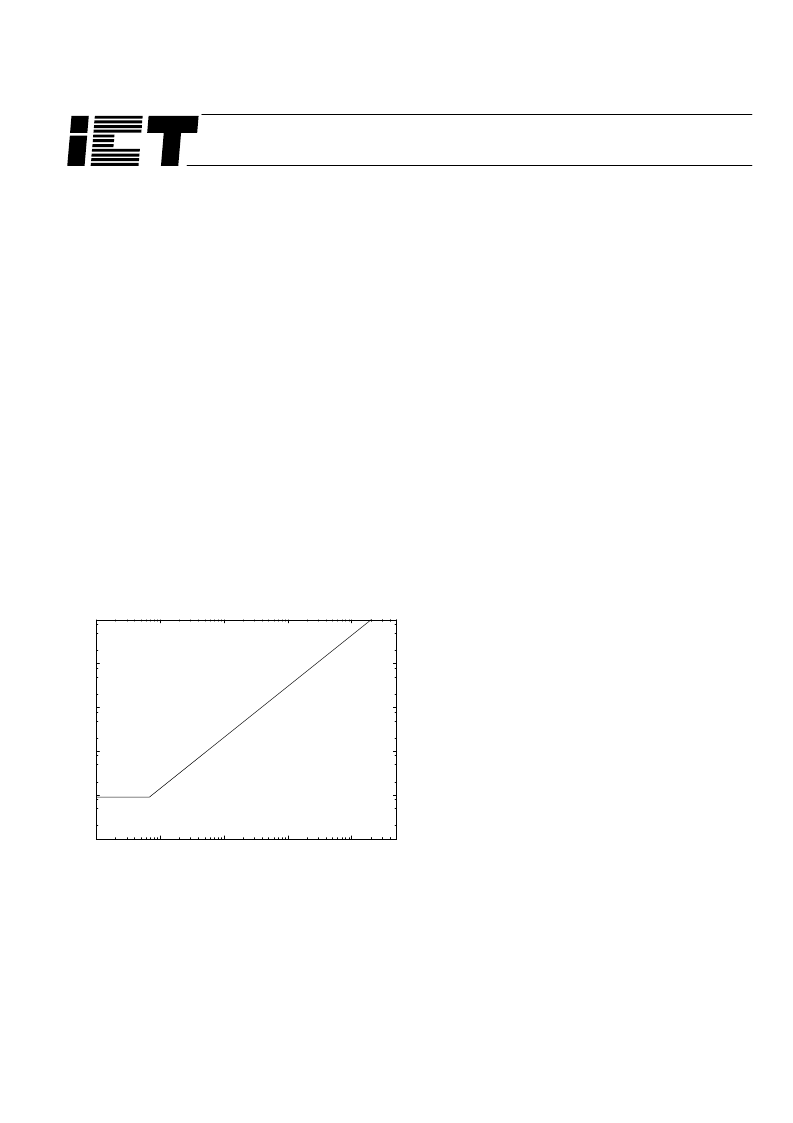- 您現(xiàn)在的位置:買賣IC網(wǎng) > PDF目錄367908 > PEEL22LV10AZT-35 (Electronic Theatre Controls, Inc.) CMOS Programmable Electrically Erasable Logic Device PDF資料下載
參數(shù)資料
| 型號: | PEEL22LV10AZT-35 |
| 廠商: | Electronic Theatre Controls, Inc. |
| 英文描述: | CMOS Programmable Electrically Erasable Logic Device |
| 中文描述: | 的CMOS電可擦除可編程邏輯器件 |
| 文件頁數(shù): | 5/10頁 |
| 文件大小: | 146K |
| 代理商: | PEEL22LV10AZT-35 |

5
PEEL
TM
22LV10AZ
04-02-037D
Programmable Clock Options
(see Table 1)
A unique feature of the PEEL22LV10AZ is a
programmable clock multiplexer that allows the user to
select true or complement forms of either input pin or
product-term clock sources.
Operates in both 3 Volt and 3.3 Volt Systems
The PEEL22LV10AZ is designed to operate with a V
CC
range of 2.7 to 3.6 Volts D.C. This allows operation in
both 3 Volt 10% (battery operated) and 3.3 Volt 10%
(power supply operated) systems. The propagation
delay t
PD
is 5 ns slower at the lower voltage, but this is
typically not an issue in battery-operated systems (see
Table 6 - A.C. Electrical Characteristics).
Zero Power Feature
The CMOS PEEL22LV10AZ features "Zero-Power"
standby operation for ultra-low power consumption.
With the "Zero-Power" feature, transition-detection
circuitry monitors the inputs, I/Os (including CLK) and
feedbacks. If these signals do not change for a period
of time greater than approximately two t
PD
's, the outputs
are latched in their current state and the device
automatically powers down. When the next signal
transition is detected, the device will "wake up" for
active operation until the signals stop switching long
enough to trigger the next power-down. (Note that the
t
PD
is approximately 5 ns. slower on the first transition
from sleep mode.)
0.001
0.01
0.1
1
10
100
0.001
0.01
0.1
1
10
I
Frequency in MHz
Figure 5 - Typical ICC vs. Input Clock Frequency for
the 22LV10AZ
As a result of the "Zero-Power" feature, significant
power savings can be realized for combinatorial or
sequential operations when the inputs or clock change
at a modest rate. See Figure 5.
When the PEEL22LV10AZ is powered up, a built-in
feature holds the outputs in tri-state until V
CC
reaches
2.2V. This prevents output transitions during power-up.
Schmitt Trigger Inputs
The PEEL22LV10AZ has Schmitt trigger input buffers
on all inputs, including the clock. Schmitt trigger inputs
allow direct input of slow signals such as biomedical
and sine waves or clocks. They are also useful in
cleaning
up
noisy
signals.
PEEL22LV10AZ
especially
applications where the environment is less predictable.
This
makes
in
the
desirable
portable
Design Security
The PEEL22LV10AZ provides a special EEPROM
security bit that prevents unauthorized reading or
copying of designs programmed into the device. The
security bit is set by the PLD programmer, either at the
conclusion of the programming cycle or as a separate
step, after the device has been programmed. Once the
security bit is set it is impossible to verify (read) or
program the PEEL until the entire device has first been
erased with the bulk-erase function.
Signature Word
The signature word feature allows a 64-bit code to be
programmed into the PEEL22LV10AZ if the PEEL
V10A+ software option (see Table 1) is used. The code
can be read back even after the security bit has been
set. The signature word can be used to identify the
pattern programmed into the device or to record the
design revision, etc.
Programming Support
ICT's JEDEC file translator allows easy conversion of
existing 24 pin PLD designs to the PEEL22LV10AZ,
without the need for redesign. ICT supports a broad
range of popular third party design entry systems,
including Data I/O Synario and Abel, Logical Devices
CUPL and others. ICT also offers its proprietary
WinPLACE software, an easy-to-use entry level PC-
based software development system.
Programming support includes all the popular third
party programmers; Data I/O, Logical Devices, and
numerous others.
相關(guān)PDF資料 |
PDF描述 |
|---|---|
| PEEL22LV10AZTI-25 | CMOS Programmable Electrically Erasable Logic Device |
| pentium III | pentium III Processor for the PGA370 Socket at 500MHz to 933MHz(工作頻率500到933兆赫茲活動帶PGA370插孔奔III處理器) |
| pentium II | pentium II processor With On-die Cache Mobile Module Connector 1 (MMC-1)(帶緩存和連接器1的奔II處理器) |
| PERICOMPI7C8150 | 2-Port PCI-to-PCI Bridge |
| PESDXL2BT | Low capacitance double bidirectional ESD protection diodes in SOT23 |
相關(guān)代理商/技術(shù)參數(shù) |
參數(shù)描述 |
|---|---|
| PEEL22LV10AZTI-25 | 制造商:未知廠家 制造商全稱:未知廠家 功能描述:CMOS Programmable Electrically Erasable Logic Device |
| PEEL22LV10AZTI-35 | 功能描述:SPLD - 簡單可編程邏輯器件 12 INP 10 I/O 35ns RoHS:否 制造商:Texas Instruments 邏輯系列:TICPAL22V10Z 大電池數(shù)量:10 最大工作頻率:66 MHz 延遲時間:25 ns 工作電源電壓:4.75 V to 5.25 V 電源電流:100 uA 最大工作溫度:+ 75 C 最小工作溫度:0 C 安裝風(fēng)格:Through Hole 封裝 / 箱體:DIP-24 |
| PEEL22LV10AZTI-35L | 功能描述:SPLD - 簡單可編程邏輯器件 12 Input 10 I/O 35ns RoHS:否 制造商:Texas Instruments 邏輯系列:TICPAL22V10Z 大電池數(shù)量:10 最大工作頻率:66 MHz 延遲時間:25 ns 工作電源電壓:4.75 V to 5.25 V 電源電流:100 uA 最大工作溫度:+ 75 C 最小工作溫度:0 C 安裝風(fēng)格:Through Hole 封裝 / 箱體:DIP-24 |
| PEEL22V10AZ3J15 | 制造商:未知廠家 制造商全稱:未知廠家 功能描述:ASIC |
| PEEL22V10AZ3J25 | 制造商:未知廠家 制造商全稱:未知廠家 功能描述:ASIC |
發(fā)布緊急采購,3分鐘左右您將得到回復(fù)。